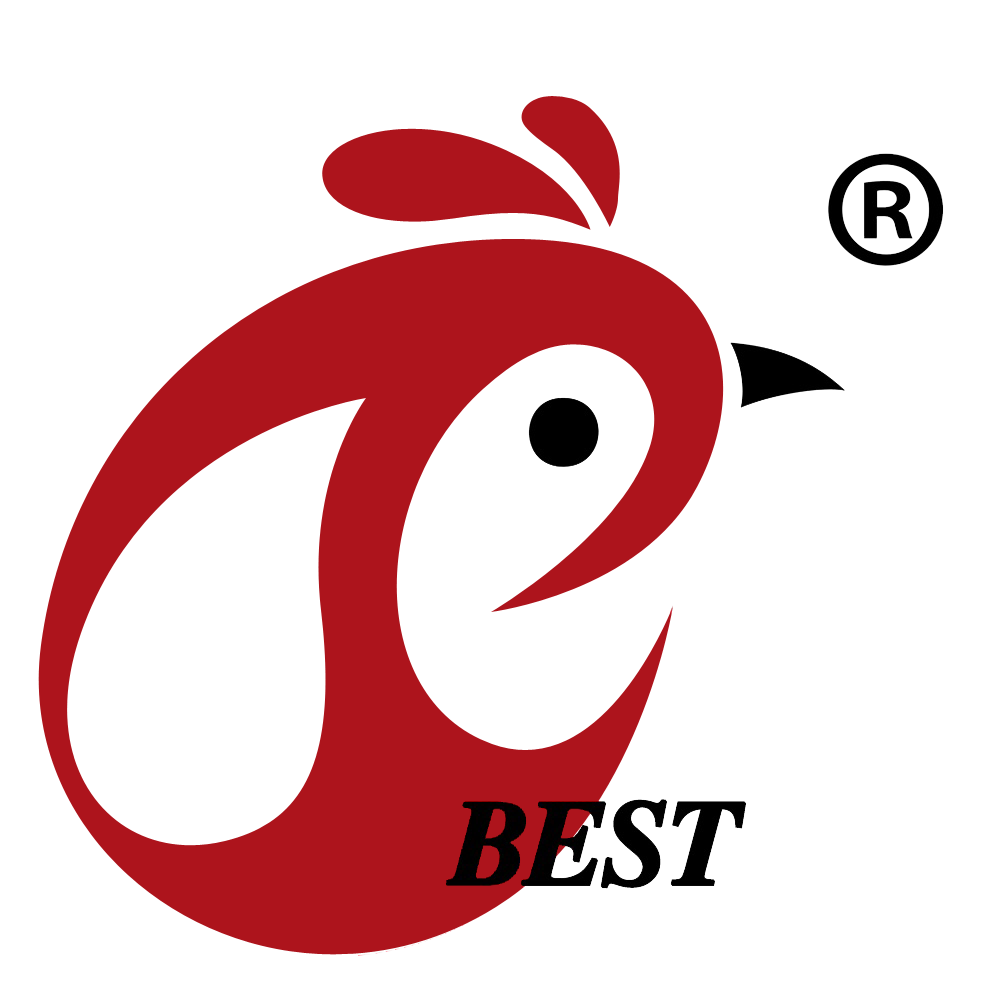
Basic information
The breeder project of raising 105,000 hens and 15,000 cocks in poultry farm is based on the production and intensification of the chicken industry. This breeder cage project is established to breed layer chickens and is equipped with 5 rows 6 tiers breeder cage equipment. This project will supply hatching eggs to fill the demands of province. There are 2 breeder houses in the farm, breeder house 102 x 15 x 7 meters
The capacity of each breeder house is 52,500 hens and 7,500 cocks. The breeder cage which contains about 105,000 hens and 15,000 cocks has a related environmental control technologies which have achieved some achievements, such as nipple drinking water technology, automatic feeding technology, and cooling technology, livestock use large fans and vertical ventilation technology, welfare and healthy farming technology
The breeder cage is equipped with full automatic machine which can be feed a large capacity in one house which reduces the land area and building cost. The breeder cage is equipped with the intelligent temperature control system. The temperature difference between the house fronts to the end is no more than 2 Celsius










Specification list
The sizes of most customers choosing of chicken cage system/equipment and floor raising chicken system/equipment are
1. Egg laying chicken cage
128 birds/set, 4 tiers/set, 32 cells/set, 4 birds/cell, LXWXH/set: 2mX2.5mX2.12m, LXWXH/cell: 1960mmX350mmX380mm
2. Broiler chicken cage
120 birds/set, 3 tiers/set, 6 cells/set, 20 birds/cell, LXWXH/set: 1.1mX2.3mX2.56m, LXWXH/cell: 1050mmX1000mmX635mm
3. Pullet chicken cage
96 birds/set, 4 tiers/set, 8 cells/set, 12 birds/cell, LXWXH/set: 1.25mX1.5mX2.9m, LXWXH/cell: 1200mmX600mmX625mm
4. Breeder chicken cage
280 female and 40 male/set, 4 tiers/set, 8 cells/set, 35 female and 5 male/cell, LXWXH/set: 3.66mX2.6mX3.7m, LXWXH/cell: 3600mmX1250mmX800mm
5. Broiler floor raising system/equipment
80 birds/m2, LXWXH/chicken house: 100mX10mX4m
6. Pullet floor raising system/equipment
100 birds/m2, LXWXH/chicken house: 100mX10mX4m
Features
1. The breeder cage helps you keep birds within a small space and allows very limited movement, this makes the chickens conserve their energy and hence enjoy an increase in production level
2. It provides comfort and stability for the birds
3. Feeds are less consumed and it avoids wastage
4. Records keeping of individual egg production and culling of poor layers are made easier
5. It is much easier to evacuate the waste in the battery cage system. Faeces drop through to the floor or metal trays which are cleaned regularly
6. It is easier to operate
Sizes and method of feeding arrangement
1. Feeder space (round and oval feeders)
A bird’s widest part is typically positioned about 10.0m away from the rim when feeding from a pan, which means the ‘feeding circle’ is actually 10.0m further from centre than the outside rim. For example, using a pan of 30.0m, the diameter of the actual circle required to accommodate optimum feeding is 30.0m + (2.0x10.0)m = 50.0m. The optimum feed circle (circumference) for a 30.0m pan is therefore 50.0m x 3.14m = 157.0m: enough for 10 birds to feed comfortably. A similar approach applies to calculating feed space for an oval pan
2. Distance between feeder lines
Placing two feeder lines with a minimum distance between of 60cm places feeding birds “tail to tail”, with no passage birds to move between them or find a place to feed. At 75.0m apart, a single bird can move between, but will be unable to pass another bird moving in the opposite direction. At 90.0m, all birds will find an “empty slot” very quickly, and feed without disturbance
3. Distance between feeder pans in the line
For a 30.0m diameter pan size, the minimum distance between pans must again be 2 x bird length (2x30) + 2 x bird width (2x15) is 90.0m which allows passage between the feeding birds. If space is limited, a gap of 75.0m will suffice, as the birds are standing in a circle. Obstruction only occurs at one point and clears quickly. Simply enlarging the pan size (and therefore the feeding circle) is not enough to optimize feeder space. The distance between the pans must also be enlarged accordingly
4. Drinker lines
For bell drinkers, as for feeder pans on a line, the rim-to-rim distance between the drinkers should be 90.0m, so that birds may walk unimpeded to the nest. Any obstruction here will also result in floor eggs
5. Lines on the slats
If feeder lines are placed on the slats, the distance between the lines must be 90.0m, as should the distance between the feeder line and the rim of the drinkers. The last line on the slats should be 60.0m minimum from the edge of the slat. At this distance, birds can eat from the line (30.0m), and two birds can pass each other (2.0 x 15.0m), without being forced off. The distance between the rim of the bell or nipple drinker line and the edge of the nest must be 60.0m minimum, to allow birds to pass each other and find their preferred nest, without being disturbed by the drinking birds
6. Lines next to the wall
A minimum 60.0m gap should be left between the last line and the outside wall, again to allow birds to eat and pass each other. It is important not to increase this distance substantially, as this creates a quiet area, where birds don not eat or pass each other, resulting in more floor eggs against the wall
7. Nest size and placement
To allow the birds to walk in head first, turn around and sit facing out, the nest must be at least 30.0m wide. And to enable the birds to inspect the nests before they select one, there must be an area in front of the nest where two hens can pass each other freely. When the nests are not on slats, the placement of perches should not block this ‘walkway’. Ideally, provide two perches per nest at 15.0m apart, with the first perch 10.0m away from the nest
Components
1. Automatic feeding system
This project is equipped with special designed automatic feeding system, which is automatic transport and load feed for silos, and easy extended for new breeder houses founded in future. The automatic feeding system consists of hoppers. It is connected with the augers which help to deliver the feed from silo to hopper and then transfers it to the feeding troughs. It is a very popular design for H-frame cage in poultry farms. Its working advantages includes the following process such as saving of labours, uniform feeding, easy to clean, not easy to hide food, the trough are 100% clean and the material is anticlastic
2. Activity raising cages for breeders
Each unit raise 10-70 birds (10 cocks and 70 hens, the ratio of cock to hen is 1:10), each bird can take average space 562.5 sq.cm
3. Automatic belt manure removal system
The automatic belt manure removal system is specially developed for layer chicken cage farms. The manure removal system directly transfers the chicken manure outside the chicken house and helps in the reduction of smell from the chicken house, it provides a clean and comfortable growing environment for the chicken, chicken to epidemic prevention effect to reduce the incidence of disease, while saving labour costs, save time and effort to improve the efficiency of breeding, this is the magic power of conveyor belt manure system
4. Automatic Egg Collection System
Eggs can reach easily to the egg belt owing to well bevel base wires. In this way, cracked and dirtiness can be reduced at minimum level. The egg collection contains lift system which reach each tiers by moving up and down, the eggs are collected from each tier and transported to the requested place and distance.The egg collecting system is the most versatile system in the market. Additionally, it provides its elevator system with a higher collecting capacity by allowing the collection of eggs simultaneously from all tiers
Our services
1. We offer the best poultry equipment which can meet our customers every requirement
2. We have long time and rich experience on the products manufacturing. If any machine operation questions after sales, we will reply you within 24 hours with solutions. And customer can be rest assured
3. We recommend suitable products based on customer’s availability resources
4. We provide free house design to help customer build well-structured and modern pen
5. We offer training to our customers for those who have no knowledge about poultry business
Frequently ask questions
Q: How can the breeder cage that contains 105,000 hens and 15,000 cocks be kept clean in other for my chickens not to get infected?
A: You can keep it clean by disinfecting the cage before the arrival of the chickens so as to avoid the chickens from getting infected
Q: How can i enhance the life-span of the breeder cage in the poultry farm?
A: The breeder cage should be disinfected after removing the first batch of chickens, there should be avoidance of water spillage from the water trough
Search
Hot product
 Feed silo systemThe automatic chicken feeding machine takes feed from a central hopper in silo or bin out to feed the birds continuously all day. In place of having to fill the score of separate feeding troughs, the poultry man fills just one silo the hopper and does it just this process once a day. There is also a manpower hopper is the beginning of main feed line. These are the complete set of automatic chicken feeding system are consists of following, the feed tank, feed silos, travelling Hooper, feed dischargeRead more
Feed silo systemThe automatic chicken feeding machine takes feed from a central hopper in silo or bin out to feed the birds continuously all day. In place of having to fill the score of separate feeding troughs, the poultry man fills just one silo the hopper and does it just this process once a day. There is also a manpower hopper is the beginning of main feed line. These are the complete set of automatic chicken feeding system are consists of following, the feed tank, feed silos, travelling Hooper, feed dischargeRead more A type chicken layer cageA type chicken layer cage is required in the market globally because of its beneficial features which helps in easy raising of chickens in a poultry farm. The A-type chicken layer cage is either is either cold galvanized or hot dipped galvanized. Our company produces this special cage system because it gets much better chicken manure collection effect and lowers the cost than any other typeRead more
A type chicken layer cageA type chicken layer cage is required in the market globally because of its beneficial features which helps in easy raising of chickens in a poultry farm. The A-type chicken layer cage is either is either cold galvanized or hot dipped galvanized. Our company produces this special cage system because it gets much better chicken manure collection effect and lowers the cost than any other typeRead more H type chicken layer cagePoultry farming is based on the industrialization and intensification of the chicken industry, the poultry cage equipment and its related environmental control technologies have achieved some achievements, such as nipple drinking water technology, automatic feeding technology, and cooling technology, livestock use large fans and vertical ventilation technology, welfare and healthy farming technologyRead more
H type chicken layer cagePoultry farming is based on the industrialization and intensification of the chicken industry, the poultry cage equipment and its related environmental control technologies have achieved some achievements, such as nipple drinking water technology, automatic feeding technology, and cooling technology, livestock use large fans and vertical ventilation technology, welfare and healthy farming technologyRead more
Contact us
Phone(whatsapp No. ):
E-mail:
Office 1 (Hong Kong):
Flat/RM A, 15/F, ManlyCommercial Building 15 Soy Street, Mong Kok
Office 2 (China Mainland):
Flat/RM 2416, 24/F, Runxing Building, Youyi Nan Street, Shijiazhuang City, Hebei Province



